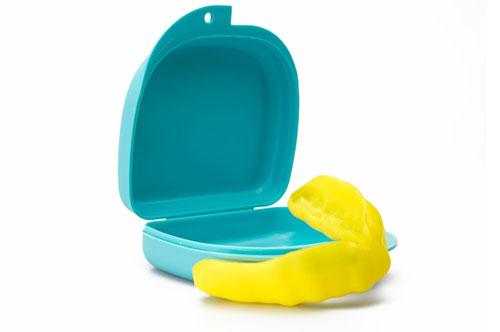My experience here was top notch! Everyone introduced themselves and the office was so well run from the moment I arrived till I left. I left with such an understanding of my oral health and a feeling if cohesiveness like I have never experienced. I will highly recommend Dr Ramjit and Sam with their team to everyone your in great hands
As your teenager approaches their final years of high school, you might start hearing complaints about jaw discomfort or notice them rubbing the back of their mouth. These could be signs that their third molars are beginning to emerge. You can remove wisdom teeth in South Florida.
Call Smile Institute at 305-990-2314 for Miami or 305-990-2532 for Key West. You want to make the best decisions for their teen’s oral health while avoiding unnecessary procedures. We want to help.
The Science Behind Third Molars
Third molars represent the final stage of dental development, typically appearing anywhere from the mid-teens through the mid-twenties. Most individuals develop four of these teeth, positioned at the furthest corners of the upper and lower jaws.
From an evolutionary standpoint, these molars served our ancestors well when their diet consisted of coarse grains, raw vegetables, and tough meats that required extensive chewing. Today’s processed foods and cooking methods have eliminated much of this need.
Additionally, the human jaw has gradually become smaller over thousands of years, often leaving insufficient room for these additional teeth to emerge without complications.
Identifying Warning Signals
The emergence of third molars doesn’t automatically spell trouble. Some fortunate individuals experience no issues whatsoever, with their wisdom teeth fitting comfortably alongside their existing teeth. However, many teens and young adults face challenges that require professional attention.
Parents should watch for several key indicators that suggest professional evaluation is needed. Complaints of throbbing or aching sensations in the back corners of the mouth often signal the beginning of problems.
Additionally, if your teen mentions difficulty chewing on one side or reports feeling like food constantly gets stuck in the back of their mouth, these could be early warning signs.
More serious symptoms include visible swelling along the jawline, recurring infections in the gum tissue surrounding partially emerged teeth, or chronic halitosis that doesn’t improve with regular brushing and flossing.
In some cases, the pressure from emerging wisdom teeth can actually shift other teeth, potentially undoing years of orthodontic work.
Determining the Right Treatment Timeline
The question of timing often weighs heavily on parents’ minds. Research suggests that extraction during the late teenage years typically results in faster healing and fewer complications compared to procedures performed in adulthood.
During this period, the tooth roots are still developing, making removal less complex for both the patient and the oral surgeon.
However, timing should never be the sole determining factor. Each case requires individual assessment based on multiple factors including available space, tooth positioning, and overall oral health. Some key situations that typically warrant prompt attention include:
- Active infection or persistent swelling that creates pockets around partially erupted teeth where bacteria can accumulate and cause recurring problems
- Radiographic evidence showing teeth developing at angles that will prevent normal eruption or cause damage to adjacent healthy teeth
Making Informed Choices for Your Family
At Smile Institute, we believe in empowering families with comprehensive information rather than rushing into treatment decisions. Not every teenager requires wisdom tooth extraction, and we take pride in our conservative approach that prioritizes your child’s long-term oral health.
During your consultation, we’ll conduct a thorough examination, including digital X-rays that clearly show the position and development stage of your teen’s third molars. We’ll explain our findings in plain language, showing you exactly what we see and discussing all available options.
Our goal is to help you understand whether immediate action is necessary, if monitoring is appropriate, or if no intervention is needed at all.
We encourage questions and welcome parents who want to seek additional opinions before making decisions. The best treatment plan is one that both you and your teenager feel confident about. Our team will discuss the potential risks and benefits of different approaches, recovery expectations, and long-term implications of various treatment choices.
Your Next Steps With Smile Institute
Regular dental visits during the teenage years allow us to monitor third molar development and catch potential issues early. We recommend evaluation around age 16, even if no symptoms are present, as this gives us baseline information for future comparisons.
If your teenager is experiencing any discomfort in the back of their mouth, or if it’s been more than six months since their last dental evaluation, we encourage you to schedule a comprehensive examination. Our South Florida practice is equipped with the latest diagnostic technology, and our experienced team specializes in helping families navigate these important decisions.
Don’t wait until pain becomes severe or infections develop. Early evaluation allows for better treatment planning and, when extraction is necessary, can often be scheduled at your convenience rather than as an emergency procedure.
Visit the Smile Institute in South Florida! For our Miami location, call 305-990-2314. For our Key West location, call 305-990-2532. Or schedule online for Miami or Key West.

The day after Thanksgiving is National Flossing Day across America. This wellness event highlights how...
Read More
Competitive high school sports put tremendous physical demands on student athletes. Basketball players battle for...
Read More
Your vibrant lifestyle shouldn’t be limited by diabetes complications, especially when proper dental care can...
Read More
